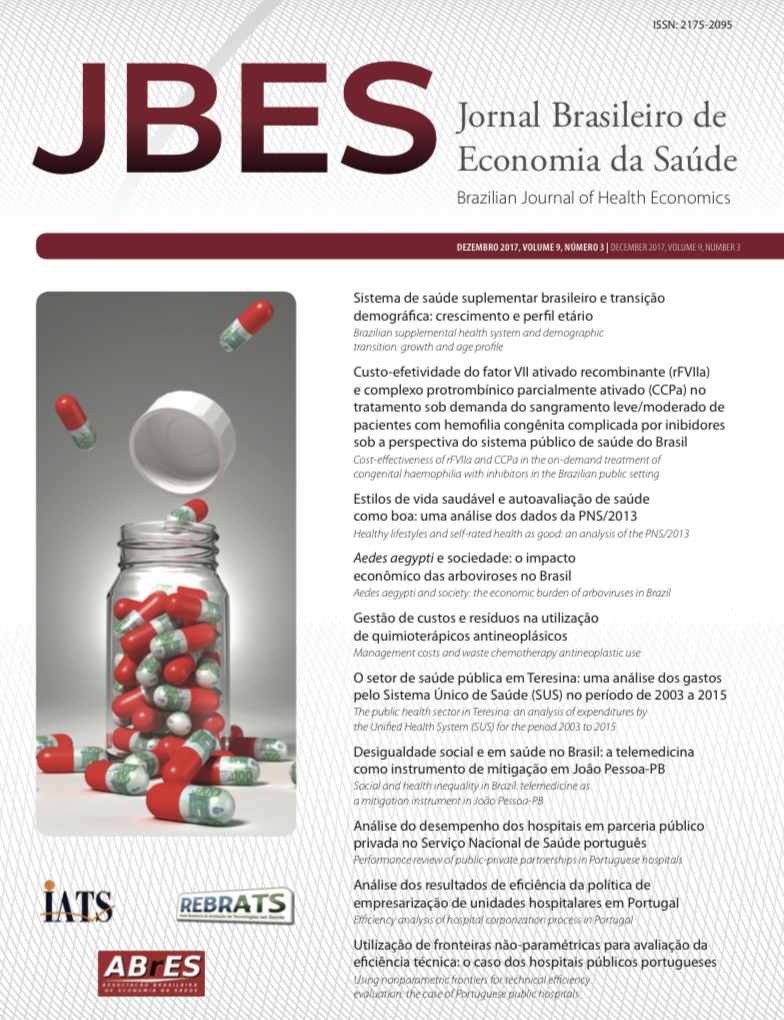The public health sector in Teresina: an analysis of expenditures by the Unified Health System (SUS) for the period 2003 to 2015
DOI:
https://doi.org/10.21115/JBES.v9.n3.p282-91Keywords:
health economics, expenditures, SUS, TeresinaAbstract
Objective: To analyze the distribution of expenditures of the Unified Health System in Teresina (SP) from 2003 to 2015. Specifically, a review of the literature on health systems, health economics, data collection on health expenditures and identifies the distribution of spending on health services. Methods: The Gini Index was used as an appropriate measure to measure the distribution of healthcare expenses. The research is justified due to the importance that the health sector has assumed in the Piauí an economic context and by the scarcity of academic studies on health economics. Results: They show that Teresina has concentrated a greater share of health spending in hospital and outpatient care services, with the Gini Index of total health expenditures being equal to 0.314, thus, a low concentration. Conclusion: The research concludes that health expenditures are unevenly dispersed over time between the subfunctions, justified in part by the rapid increase in spending on health services in Teresina.






